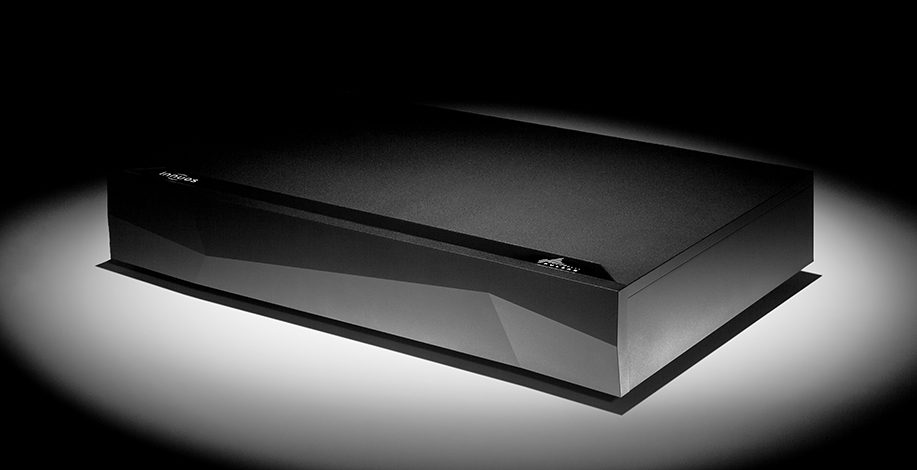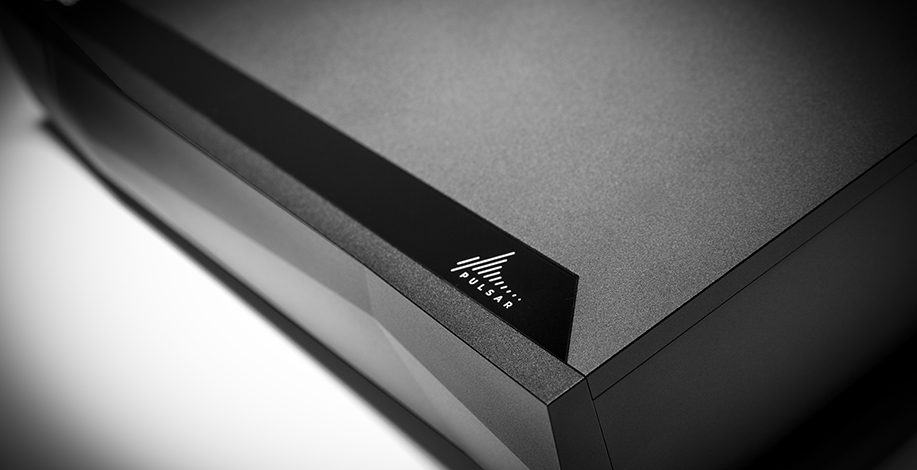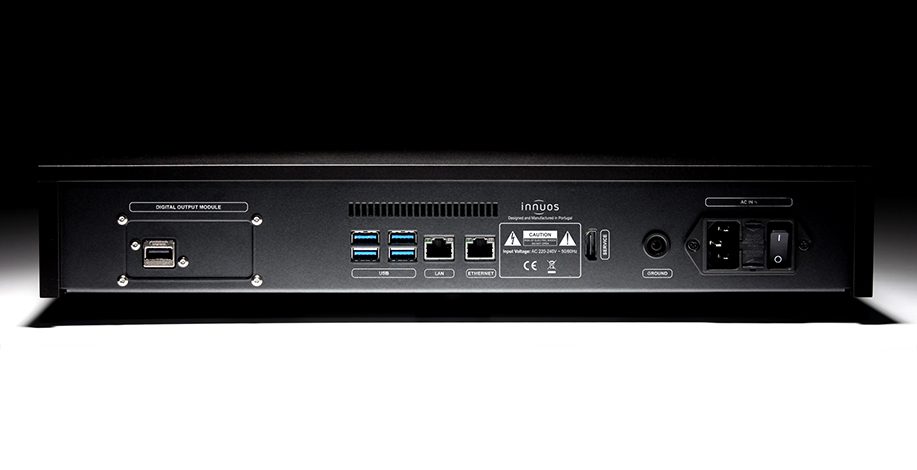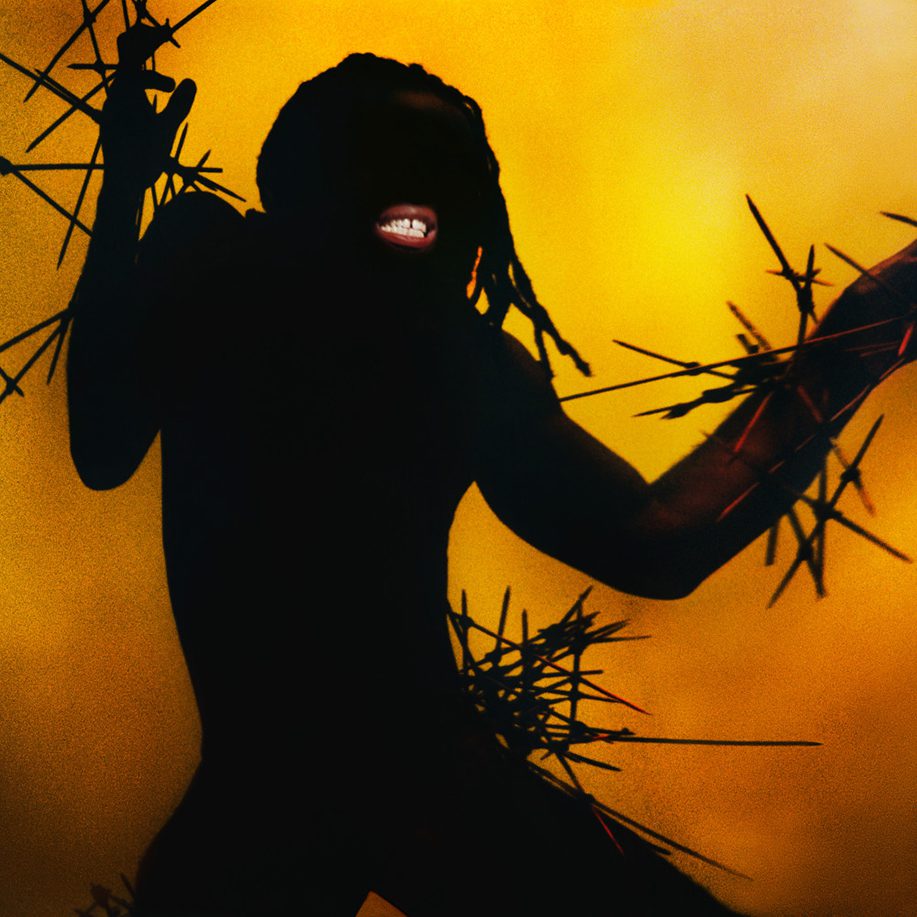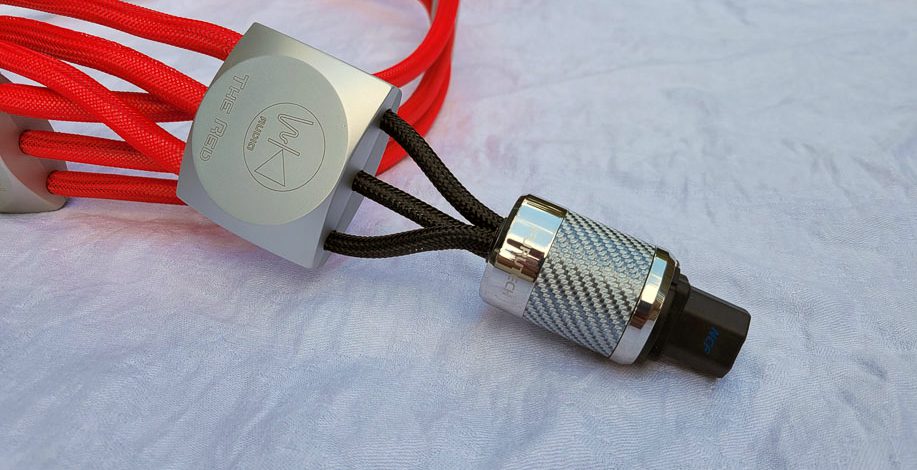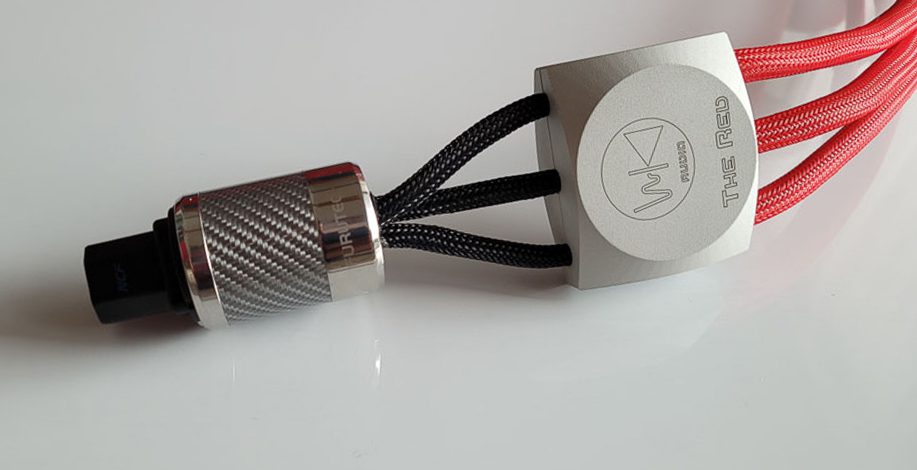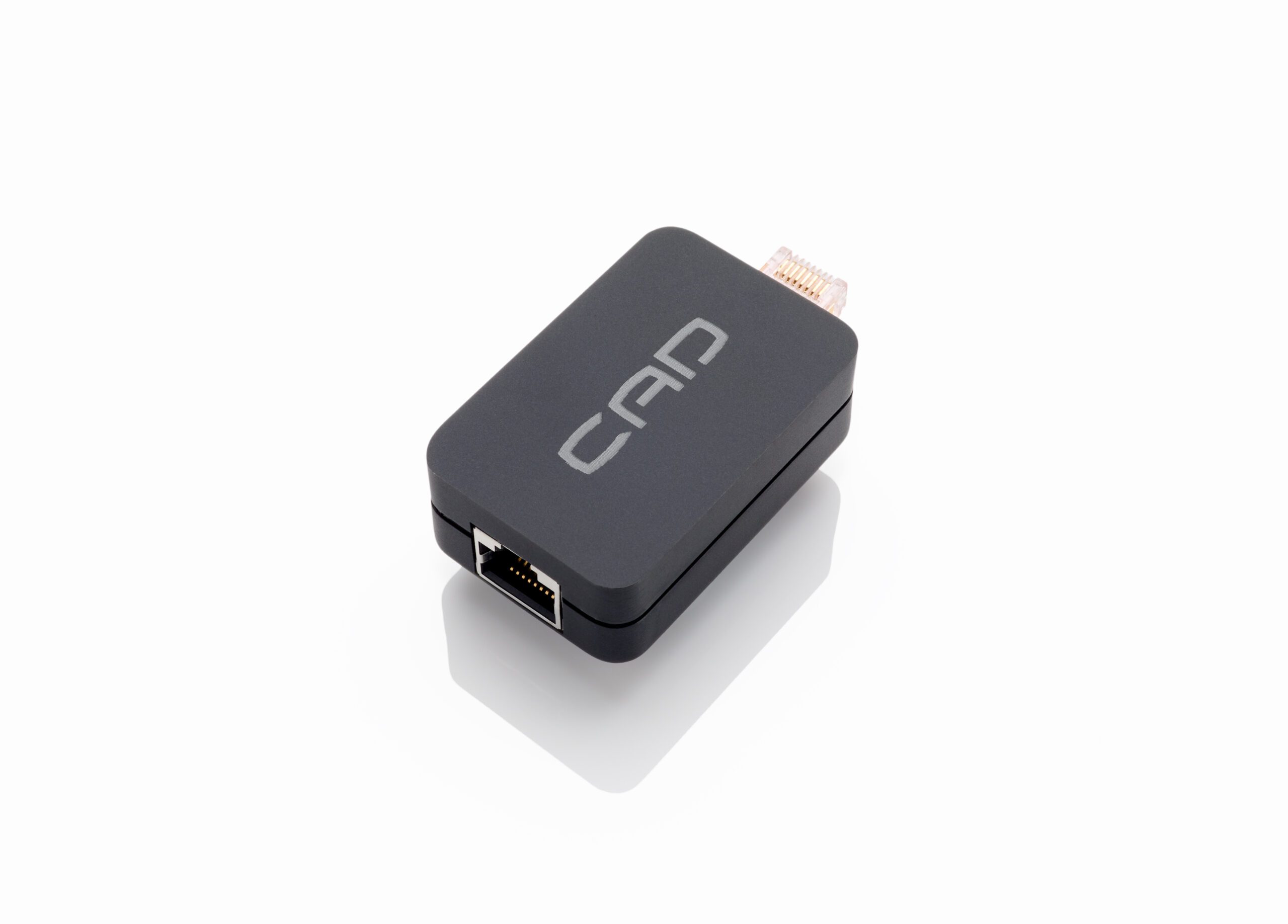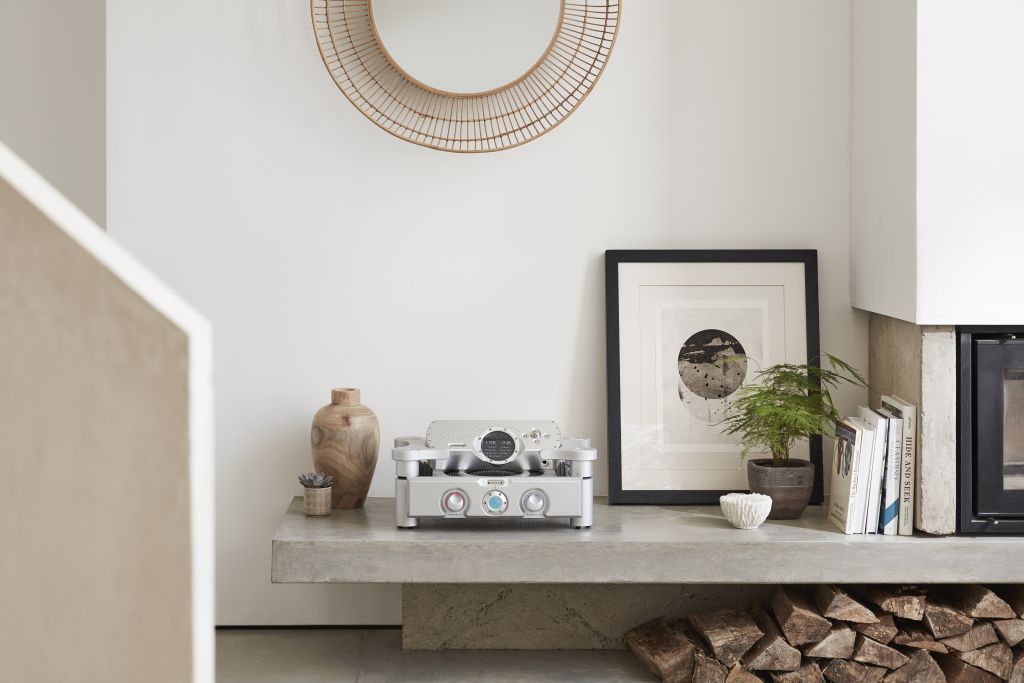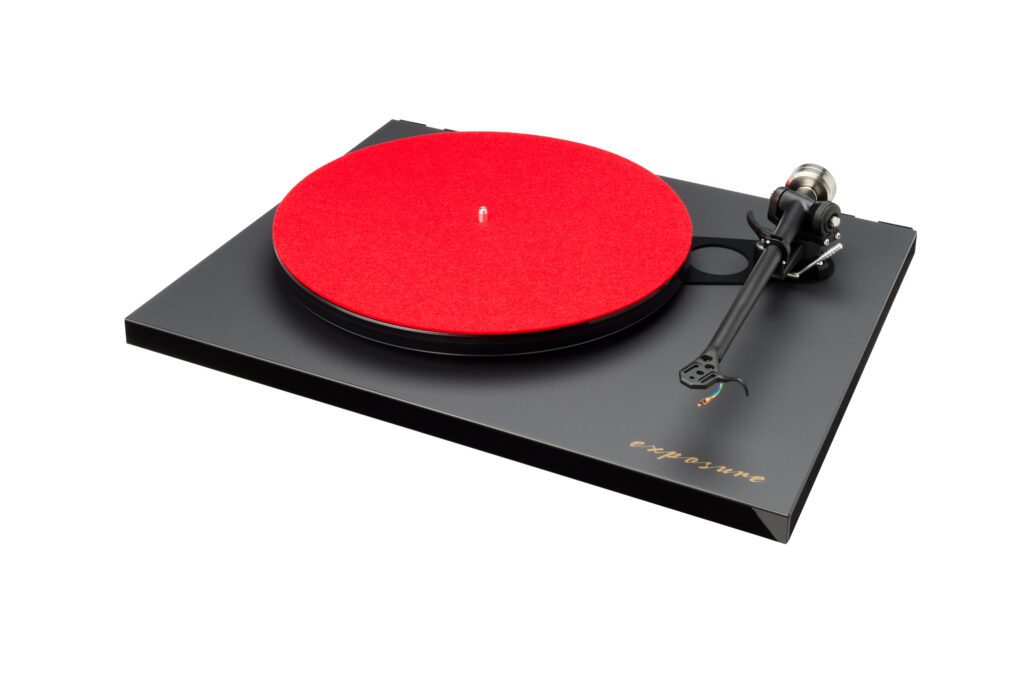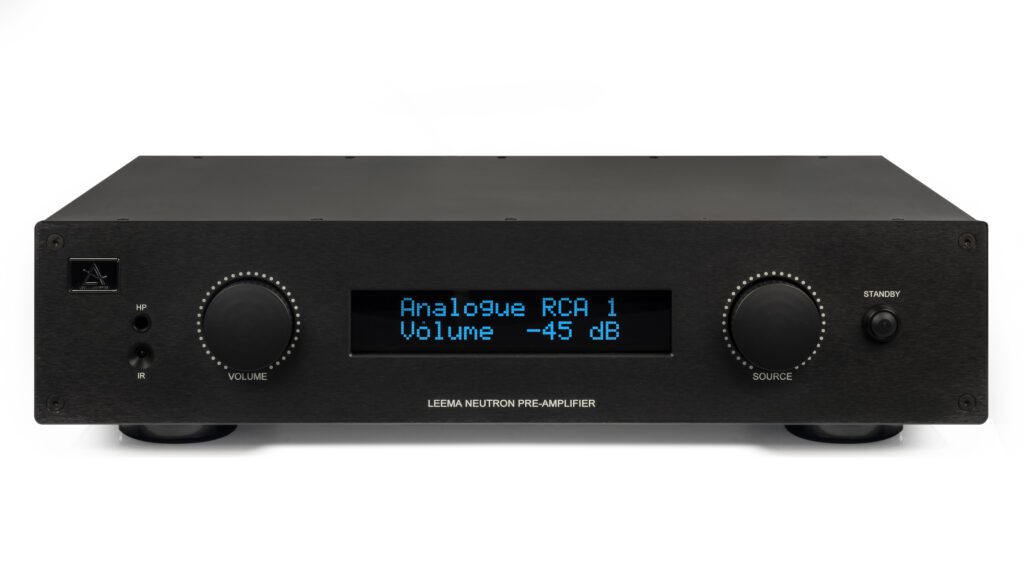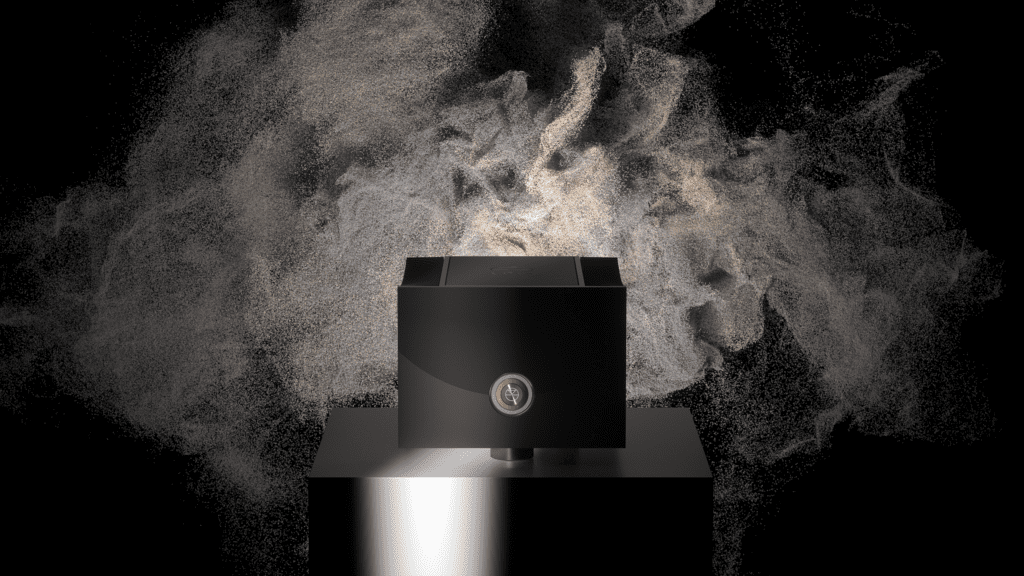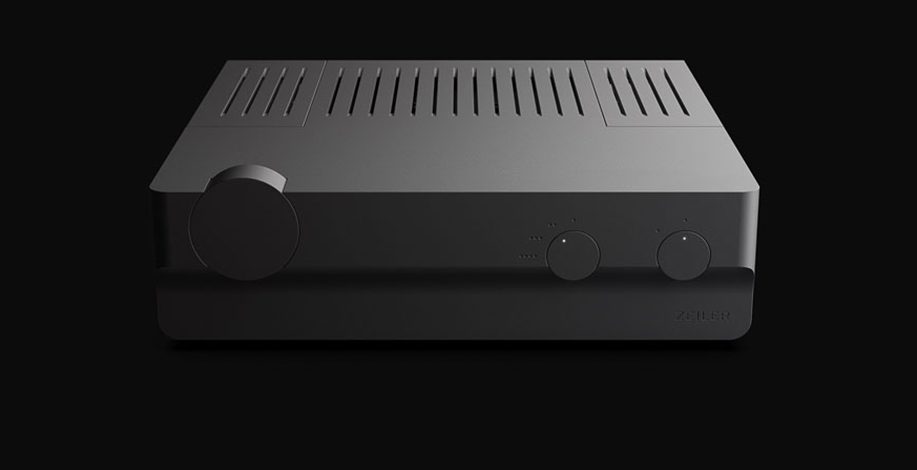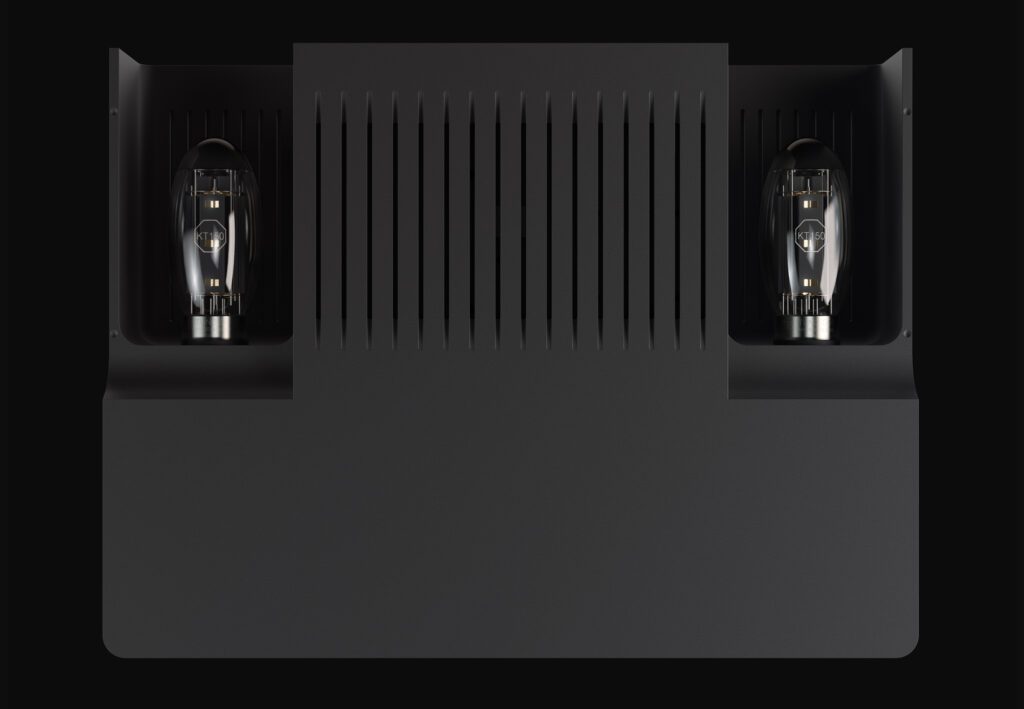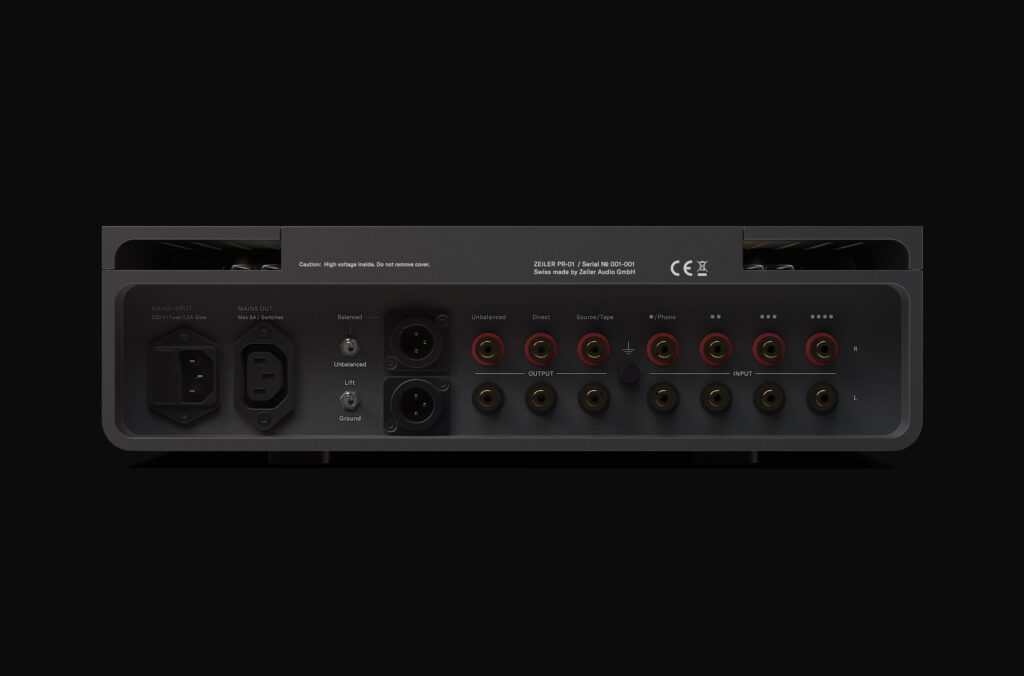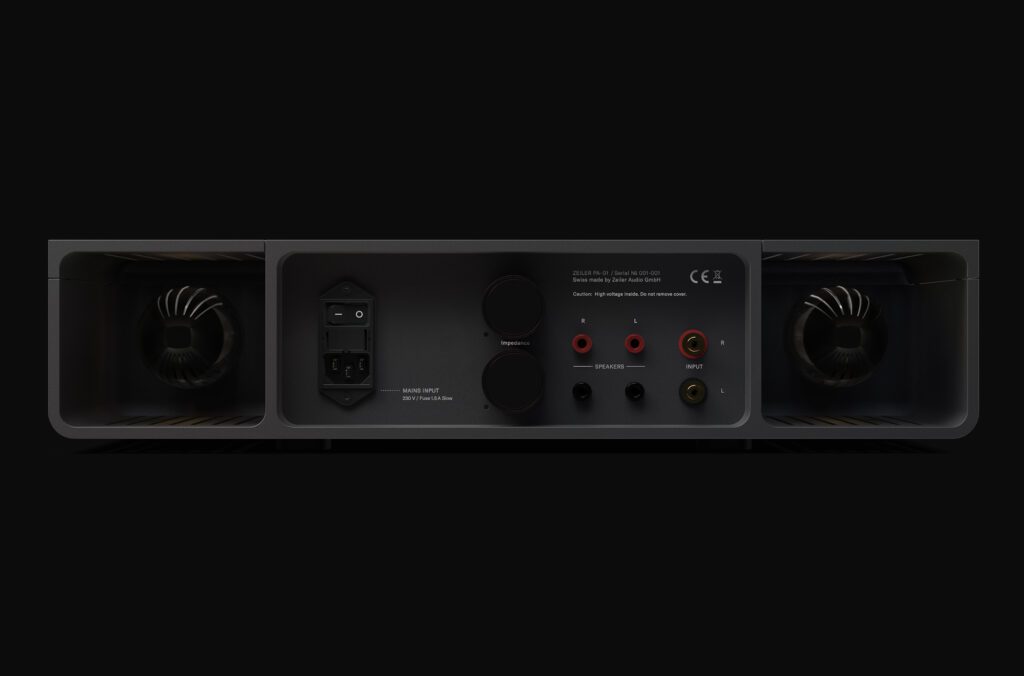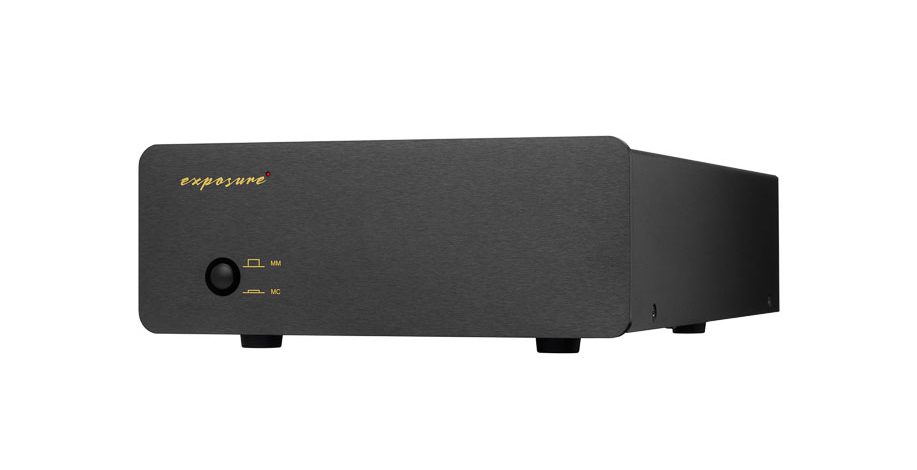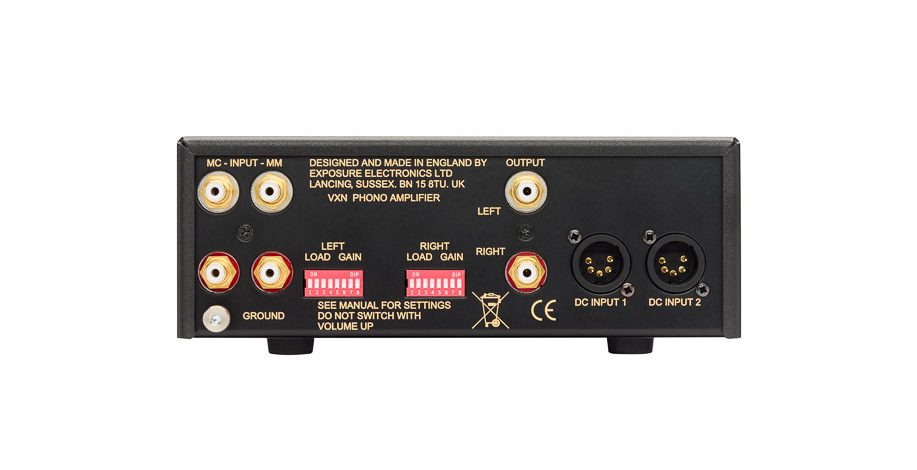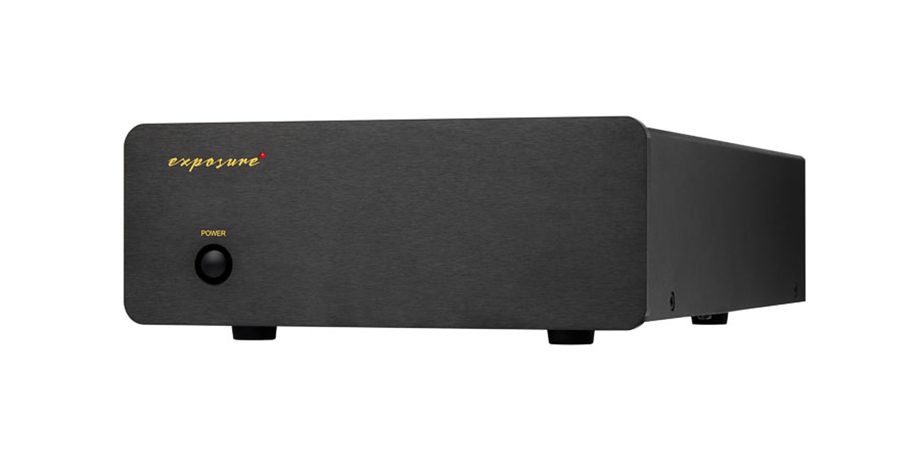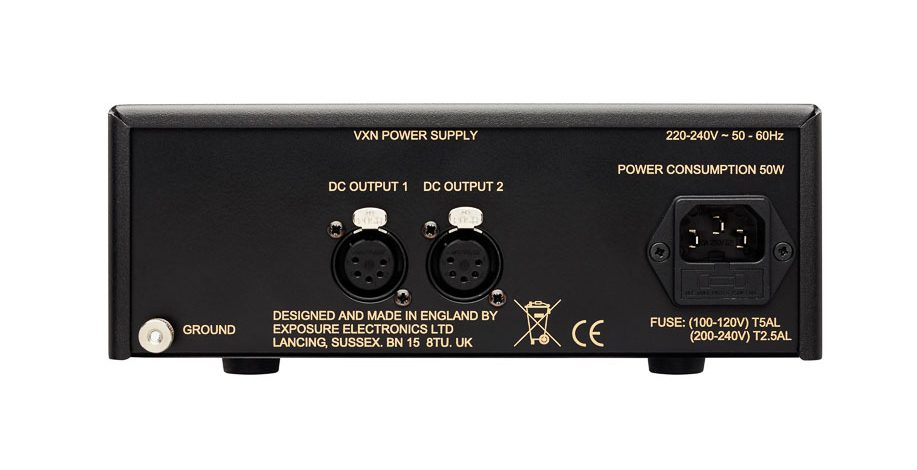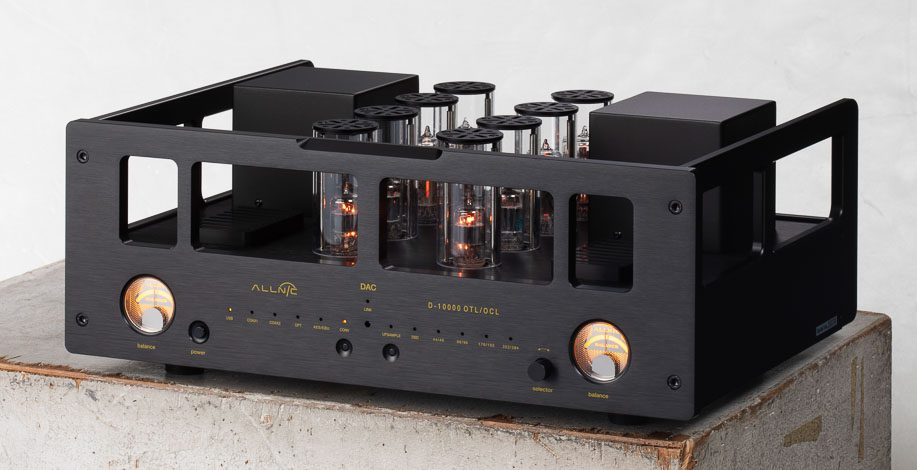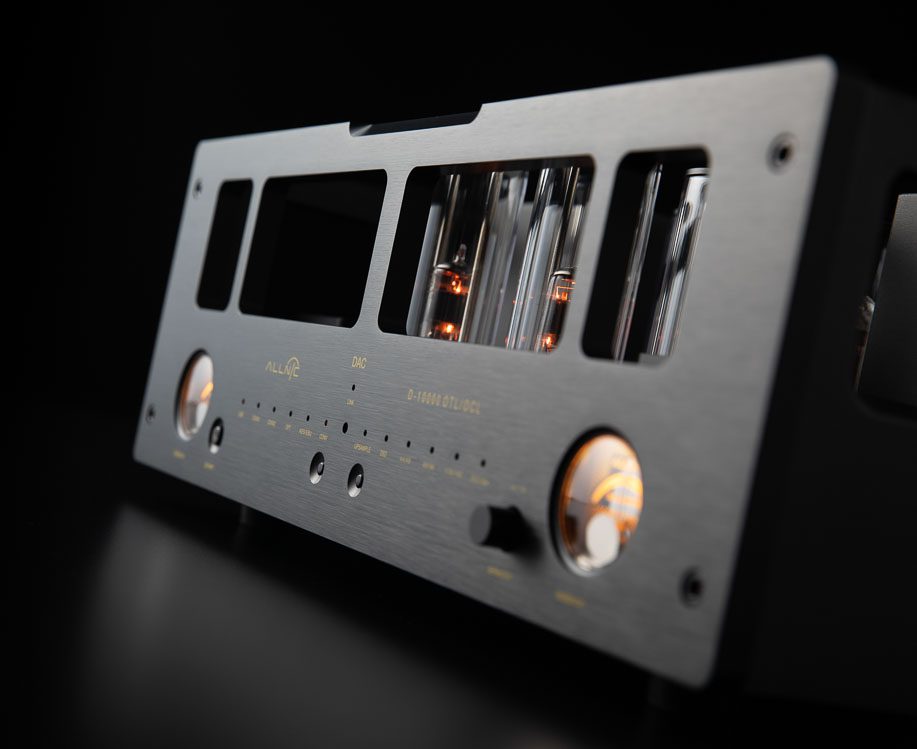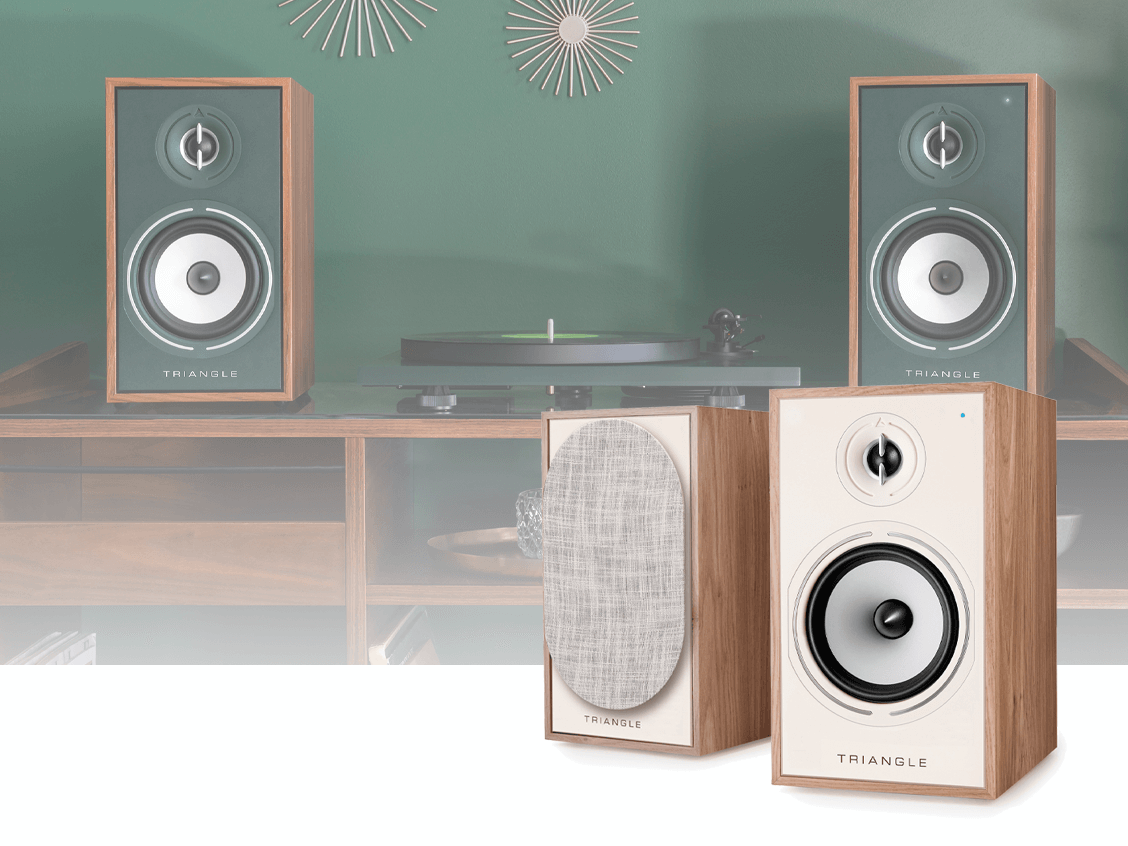The names may have changed a few times, but the 35th Bristol Hi-Fi Show took place last weekend. It’s no longer the Bristol Sound & Vision Show. The hotel is now the Delta by Marriott, but it’s the same brutalist concrete box perpetually covered in scaffolding. But a line snakes around the hotel yearly, with people braving February weather to be the first through the doors.
This year, several big names representing a significant part of the Bristol audio ‘experience’ did not attend the show. Bowers & Wilkins, KEF, Henley (Cabasse, Hi-Fi Rose, Musical Fidelity, Pro-Ject) and Monitor Audio were among the no-shows. However, neither this nor the almost perpetual rain dampened people’s enthusiasm for high-quality audio. The show filled the basement and ground floor conference spaces, the mezzanine (where we exhibited) and four floors of rooms.

Absent the usual suspects, many companies were more than happy to step up. For example, SCV Distribution took a very large stand in the main hall, with sound booths to show off IsoTek and IsoAcoustics products, as well as an open plan headphone and new brand showcase. Impressive.
Acoustic Energy
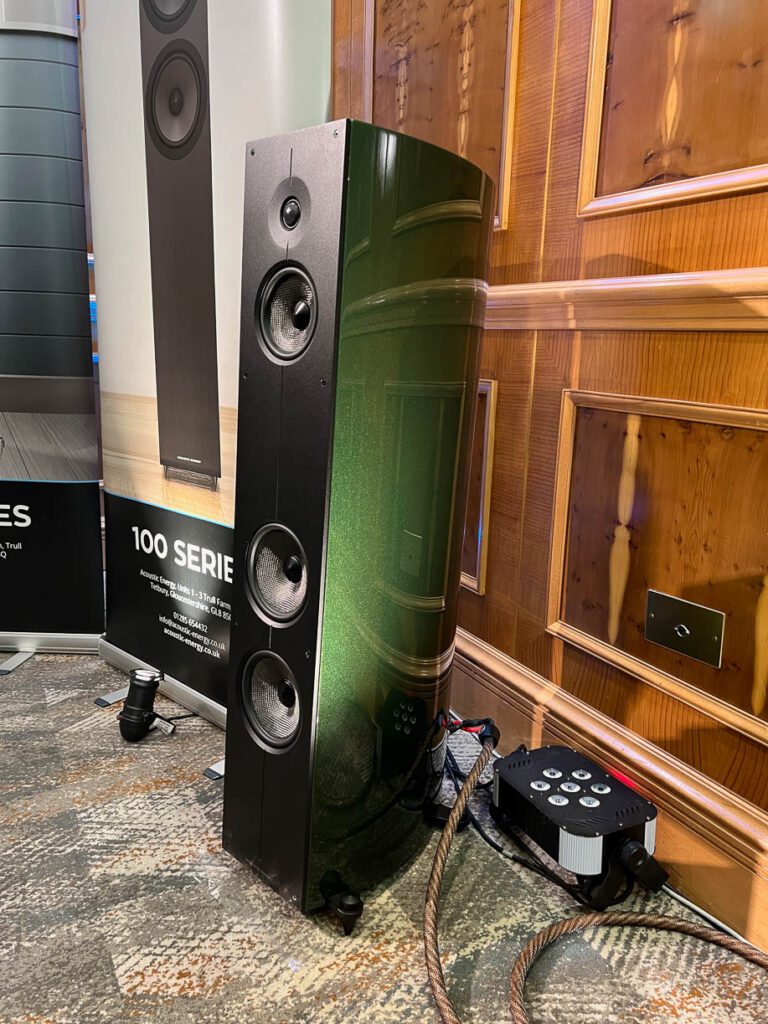
The Corinium is the latest flagship from Acoustic Energy. The three-way, four-driver design is a hefty yet mid-sized floorstander, resulting from three years of engineering by the brand. Given the original Latin name for its Cirencester base, Acoustic Energy’s Corinium is available in four finishes, including a custom British Racing Green gloss. Prices start at £6,000 per pair.
Anthos Acoustics

Perhaps the most ambitious active loudspeaker at the show came from start-up Anthos Audio. The £100,000 system comprises a single-ended 2A3 triode amplifier with digital filtering to power the large two-way horn/bass horn system. The main horn loudspeaker uses a thirteen-leaf ‘flower horn’ using wooden laminations finished in the style of Cremonese instrument makers. The looks of this loudspeaker may be uniquely ‘anatomical’, but it sounded terrific.
Chord Company/English Electric
Chord Company launched a BurndyX cable designed to replace and improve the cables made for Naim Audio power supplies. They feature better insulation and shielding and are cheaper than the brand’s first Burndy T designs. Prices start at £1,772.50. The brand’s new entry-level power block is the £600 Powerhaus P6. This eschews the bus-bar conductors of the larger Powerhaus models but features heavy-grade cable using the brand’s Aray technology and high-end sockets.
Meanwhile sister brand English Electric has added to its range of network products. The new £250 EE1 network isolator joins the latest trend in keeping Ethernet noise nasties from the door.
Chord Electronics
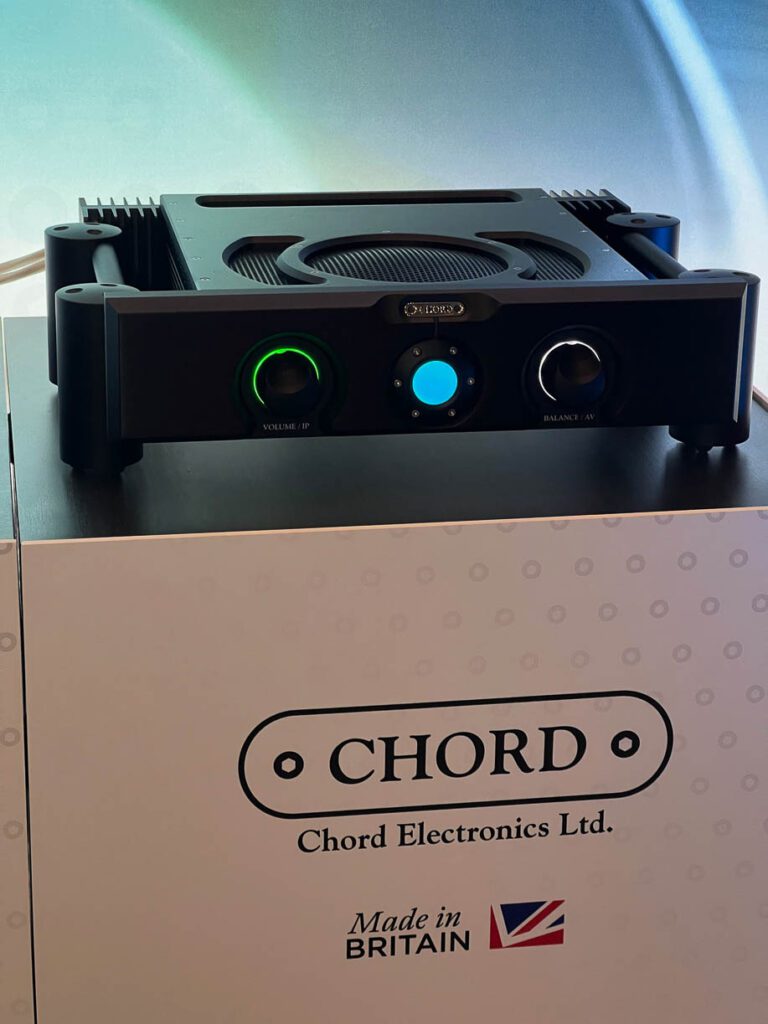
The £8,500 Chord Electronics Ultima integrated amplifier was shown in early form at Munich High-End 2023, but production was delayed. This is the first time it has been shown now in full production. At the show, it was played with the Qutest DAC beefed up by the M Scaler upscaler and played into ATC loudspeakers. Simple, yet effective.
Cyrus Audio
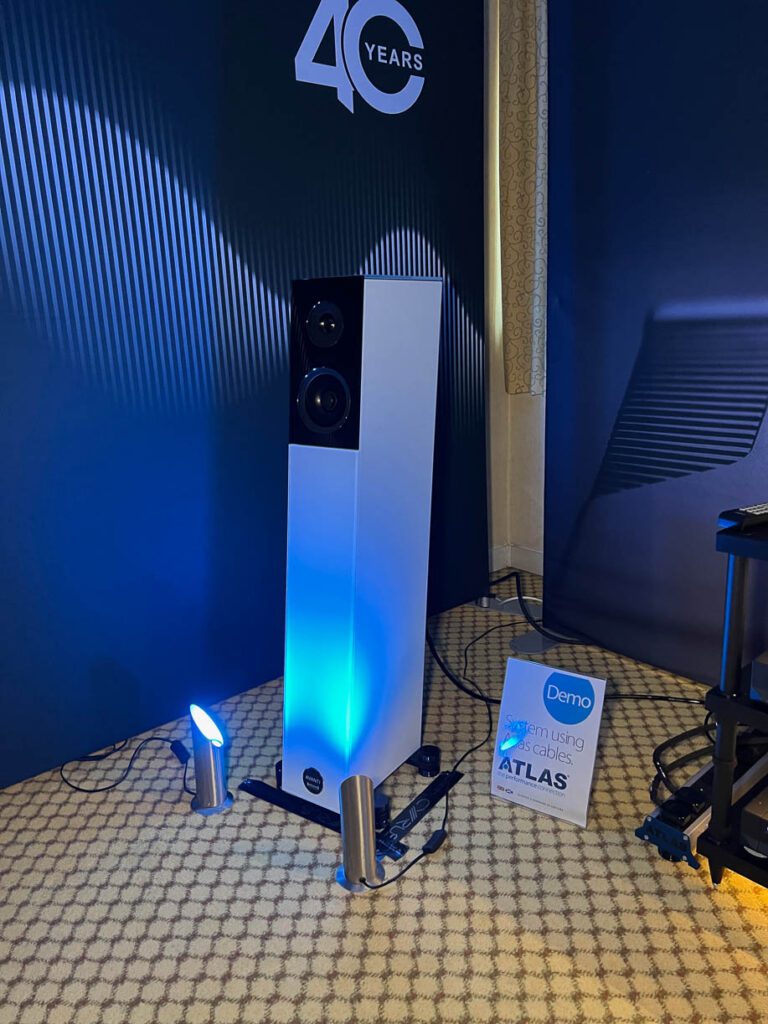
Now distributing Audio Physic, Cyrus Audio showed the latest £8,495 Avanti loudspeaker from the brand. This tall tower loudspeaker features an ‘invisible’ subwoofer built into the base. 2023 saw the Avanti given a complete redesign and it looks and sounds promising.

It was driven by a full Cyrus XR system, complete with the £4,295 TTP turntable launched late last year. This belt-drive, DC-motor, deck and arm can be upgraded with the PSX-R2 power supply, and is designed to keep resonance vanishingly low. An impressive start to Cyrus’ 40th Anniversary.
DALI

We tend not to discuss existing products in a show report, as there’s always lots of new product launches. The DALI Minuet SE is a deluxe finish and refined version of a loudspeaker that has been in production in various guises for decades. Nevertheless, coupled with Lyngdorf’s Room Perfect amplification, the diminutive £1,50o two-way stand-mount sang like a little angel!
Decent Audio
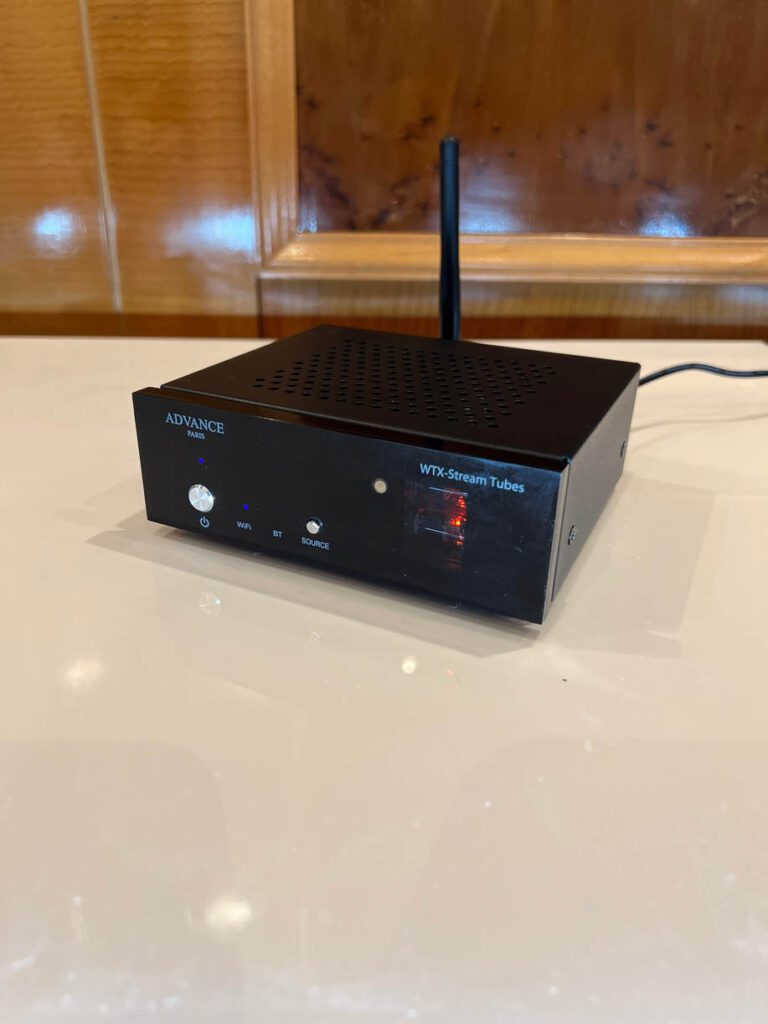
UK distributor Decent Audio is forever adding to its range. The latest sees the return of Advance Paris, a French audio electronics company with a wide range of affordable, performance-driven products. One of the show’s highlights was the diminutive £500 WTX-StreamTubes, an Ethernet-based streamer with built-in tubes to help shape the sound.
Epos
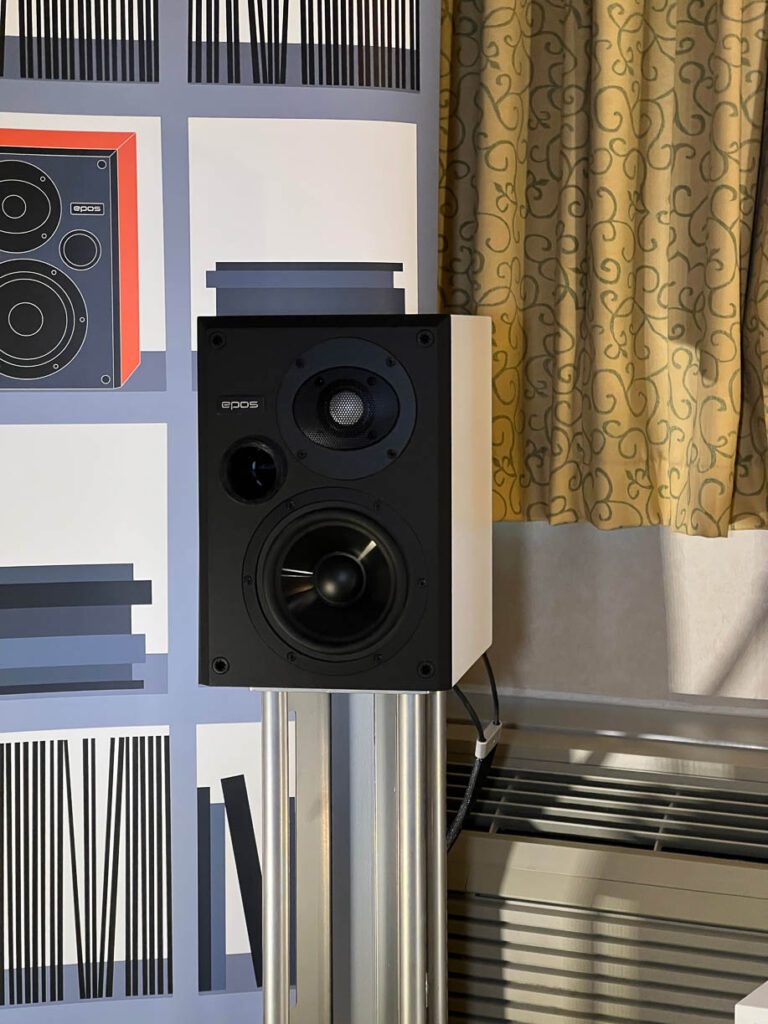
Sadly, I didn’t get to speak to designer Karl-Heinz Fink on the creation of his new Epos ES-7n, but the £1,890 compact loudspeaker uses the same drive units as seen on his Epos ES-14n but in a smaller front-ported cabinet. They sounded excellent played through a T+A all-in-one system.
English Acoustics
Alongside its Stereo 21c and Stereo 41c, English Acoustics has been promising a matching preamplifer. At Bristol, it delivered on that promise in the shape of the £5,670 Downton. This three line-input amplifier also features a MM phono stage, has a motorised volume potentiometer and separate power supplies for the high and low current rails.
Exposure
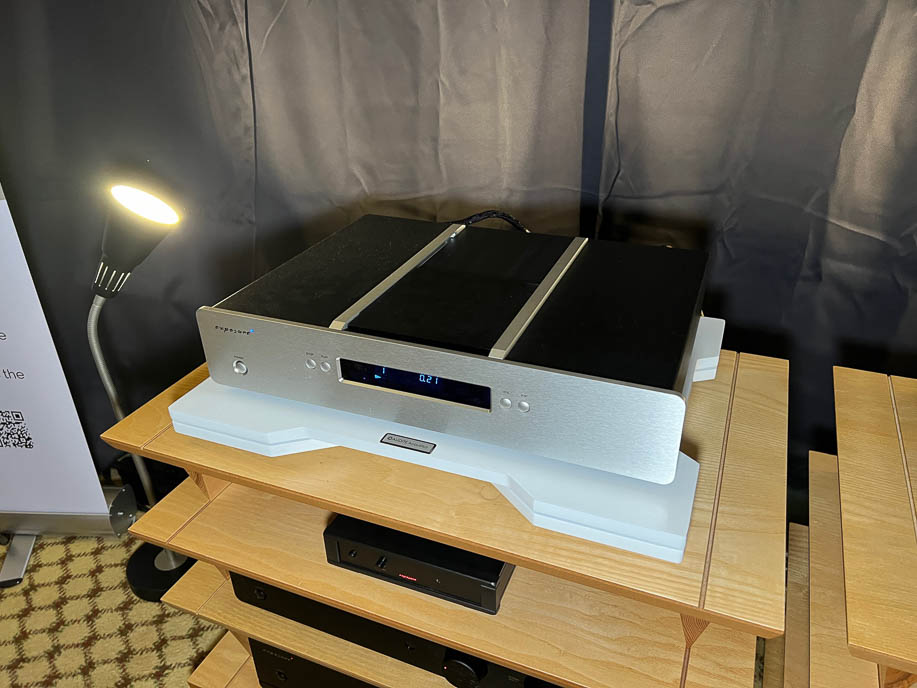
Alongside the new £1,300 360 turntable announced just before the show, Exposure also released its new 3510 CD player, priced at £2,500. The top-loading player is designed to match the company’s 3510 range, but also its 5010 line. Not a lot is known about the player as yet, save that it has a magnetic clamp and a sliding lid, and sounded really good in Exposure’s effortless-sounding, yet dynamic room.
FiiO
One of the first ‘off-piste’ events held at Bristol, FiiO showed its CP13 Portable Stereo Cassette player. This USB-charged machine is perhaps the ultimate retro audio device, finished in a neat 1980s pastel blue. FiiO remains unclear about where it gets its cassette tape drives. Regardless, couple this with a set of Koss Porta Pro headphones and this £100 cassette portable will roll back the years.
Fyne Audio

If this was the year of active loudspeakers, then dual concentric loudspeakers weren’t far behind. Fyne Audio added the £3,499 Supertrax supertweeter to its Vintage range. The 360° radiation pattern SuperTrax sits directly above the acoustic centre of the drive units (easier with dual concentrics). Fyne Audio also showed its new £12,000 F702SP (or Special Production) and £15,000 F703SP loudspeaker, a cryo-treated version with upgraded components, a different plinth and elements taken from its flagship F1 range. We’ve secured an exclusive test of the F702SP in the next issue of hi-fi+, too!
Harbeth
No matter how often I tried, the Harbeth rooms were always full. Surely a good sign. Harbeth launched the new NLE system at the show; an active DSP-based loudspeaker system shown in ‘skunkworks’ form last year. The company highlighted the flexibility of the DSP active system by using Quad valve amps for the midrange and treble, and Class D amps for the bass. The total cost – including loudspeakers, DSP module, and a set of Class D amps – comes in at over £40,000.
Hegel Music Systems
A long time ago, Hegel said it would never make a phono stage. Then it made one. Then it said it would never put a phono stage in an integrated amplifier. At Bristol, the company showed its £3,250 H190v integrated amplifier… with MM phono stage. This is built on the powerful 150W Class AB H190 integrated amplifier chassis.
Kanto Audio
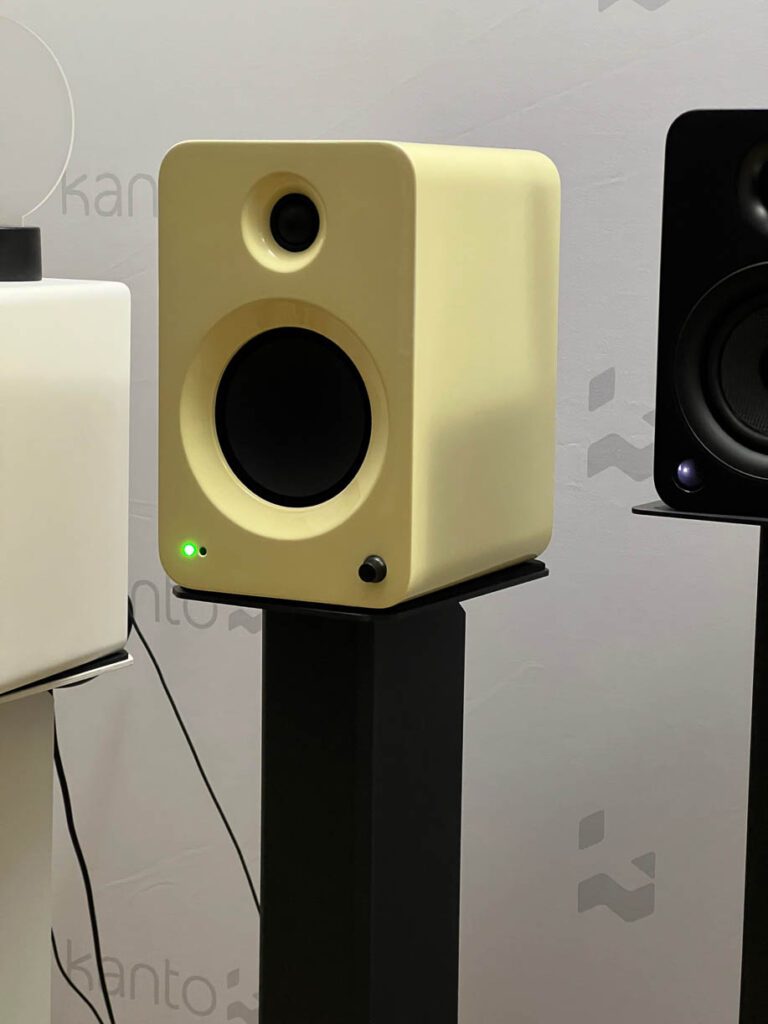
Ren is the first loudspeaker from Kanto Audio to feature HDMI eARC. This means it can be controlled by a TV based system effortlessly, even doing without its own remote control. Using the best of Kanto’s components to create something special, the new Ren will be available later in the year.
Kudos Audio

Kudos Audio unveiled its unpowered active Sigao Drive crossover in prototype form. The company’s Titan range of loudspeakers have long benefitted from active operation. However, active crossover options proved limited after Naim Audio took its SNAXO out of production in 2022. Two famous Naim names have designed this unique, Kudos-dedicated device; Roy George and Trevor Wilson. The Sigao Drive will be formally launched at this year’s Munich High-End and expect it to cost around £6,000.
Leema Acoustics

The new Particle range of electronics from Leema Acoustics forms the brand’s new entry-level. Comprising the Electron CD player, Neutron DAC/Preamp and Graviton power amplifier, each component costs £1,400 and looks set to dominate the UK first audio system world this year!
Linn
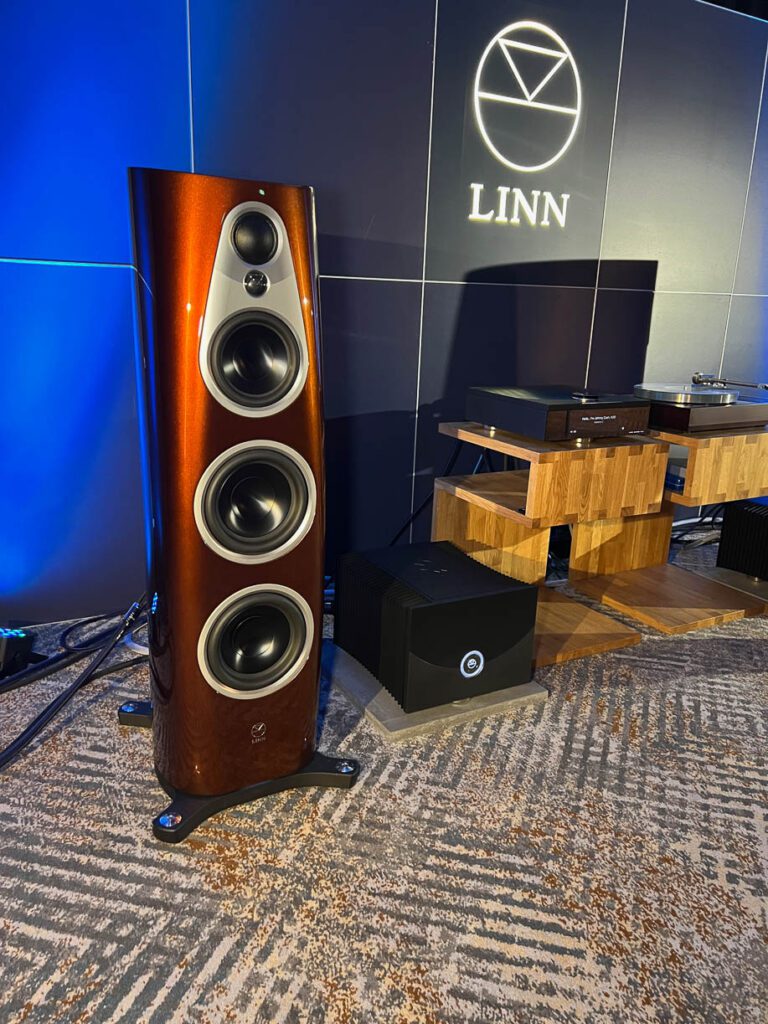
Linn is traditionally the company most likely to promote active loudspeaker systems in home audio. This time, though, while others were showcasing active loudspeaker systems, Linn was playing its new Klimax 800 mono power amps. This cool-running, drive-anything cubes (Kubes?) of power deliver 800W and cost an equally cool £37,500 per channel. The Klimax 800 were played in the context of a full Linn system weighing in at a shade under £200,000. This made it the most expensive system in the show.
Naim/Focal

First seen at CES 2024, the Bristol Show was the first public showing for the new Naim Uniti Nova PE (or Power Edition). Looking almost identical to the original Uniti Nova, the £8,599 PE delivers 150W per channel, running in Class D, a boost from the 80W of the previous model.
Orange

Guitar amp specialist Orange has made a range of Bluetooth active loudspeakers and headphones, arguably following in the footsteps of fellow UK guitar amp brand Marshall. However, the more exciting device for the tube-based enthusiast is the £850 Valve Tester Mk II from the brand. The standard tester covers many preamp and power amp tubes as standard and has plug-in modules to test an extensive range of power and rectifier tubes.
Origin Live
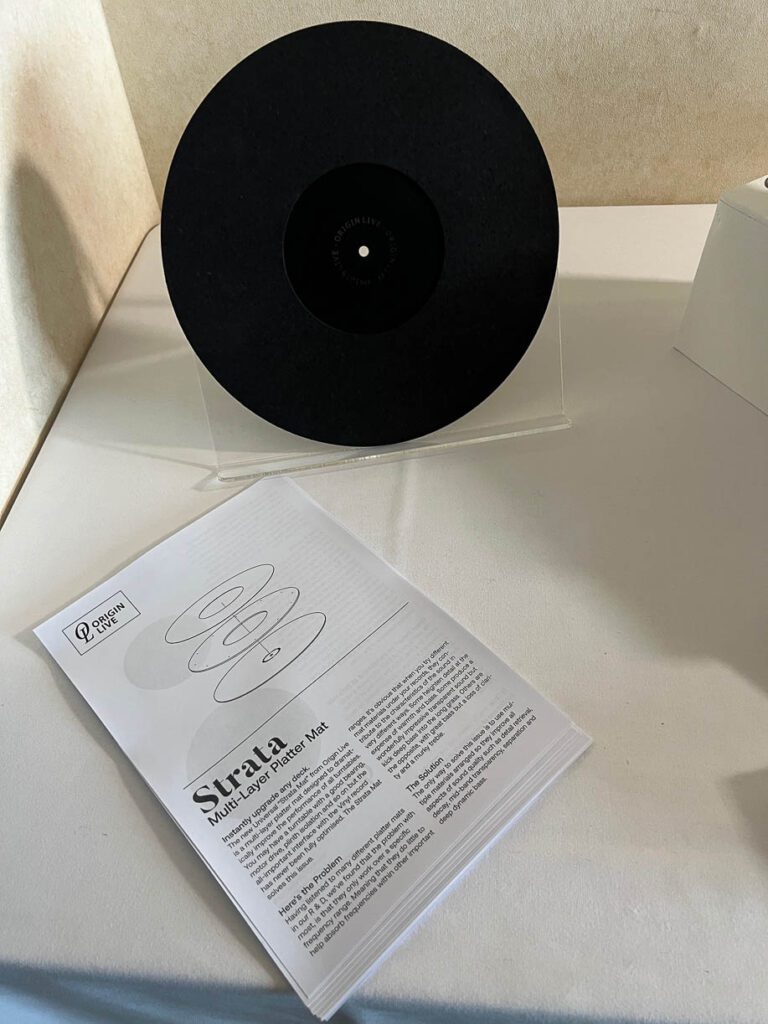
The £295 Strata mat from Origin Live brings a stripped-down version of the company’s platter to other turntables. The three-layer mat is 5mm thick, and represents an ideal point of contact between LP and platter, according to Mark Baker.
Pearl Acoustics
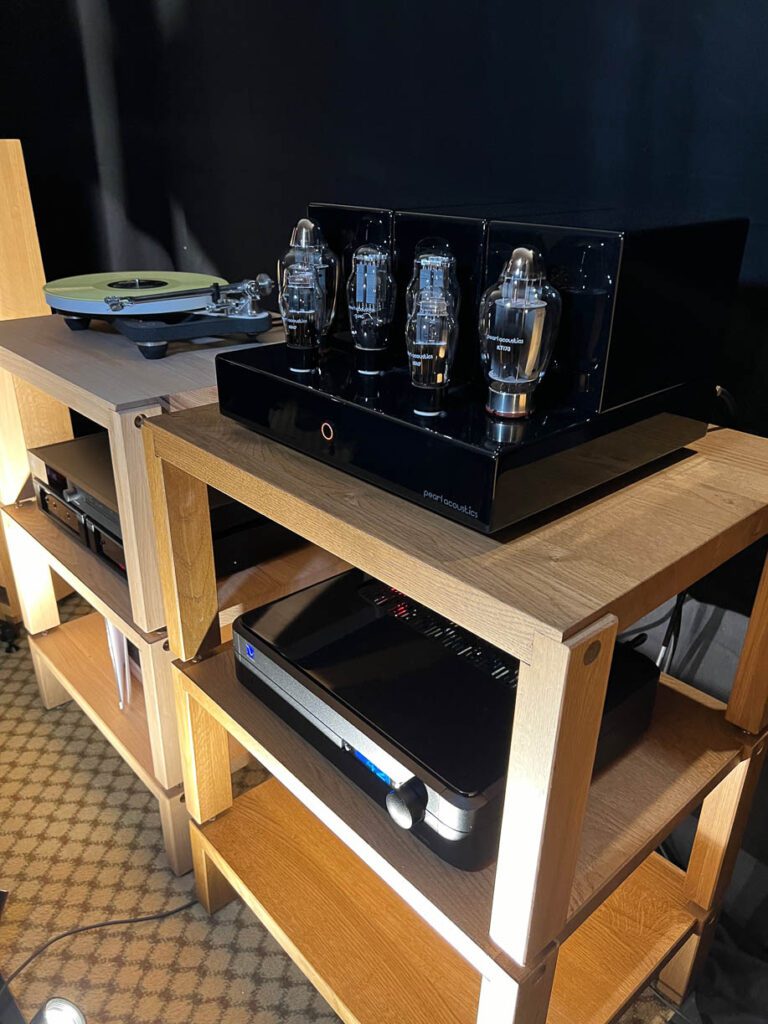
Known for the clever Sibelius loudspeaker, Pearl Acoustics’ second product is its £8,500 170 power amplifier. Delivering a mighty 18W per channel from its KT170 power tubes (running in single-ended operation), the amplifier is designed for maximum linearity and speed… and is designed for far more than just a matching amp to the Sibelius. We’ve secured an exclusive review of this amplifier in an upcoming issue of hi-fi+.
PMC
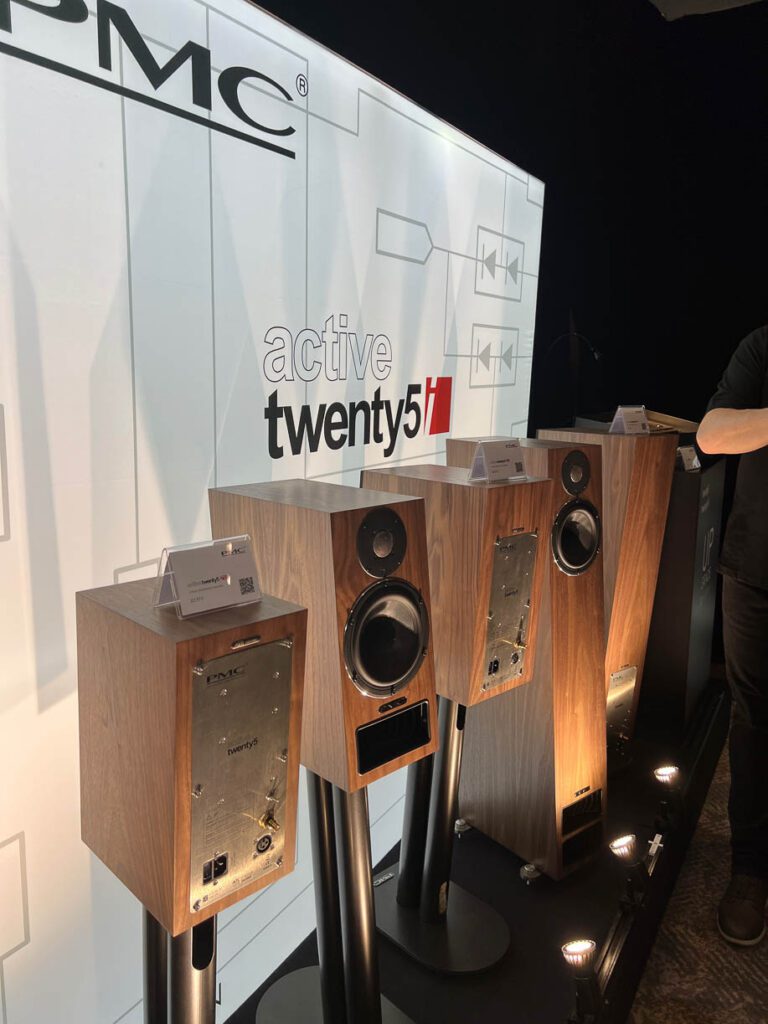
This was the year of active loudspeakers. The big talking point of the show was PMC’s active versions of the four two-way loudspeakers in the twenty5i range. Both treble and midrange drivers are matched with their own 100W amplifier and include balanced and single-ended inputs.

Existing owners of passive versions of twenty5 and twenty5i two-way stand-mounts and floorstanders can also upgrade their loudspeakers. The upgrade kit is a simple rear panel swap. Prices start at £3,975 for the Twenty5.21i Active and top out at £7,975 for the Twenty5.24i Active. The price of a pair of active modules is £1,795.
Rega

Rega was showing its new Nd7 moving magnet cartridge. With a fineline stylus and smaller coils than most MM designs, the Nd7 delivers the sort of higher frequency and channel balance performance normally associated with moving coil cartridges. The cartridge is expected to cost around £450.
Further down the line, Rega showed off its forthcoming high-end pre/power system, the line only Mercury and 165W Solis. Both are expected to cost about £6,000, but currently are still in the development stage.
Russell K.
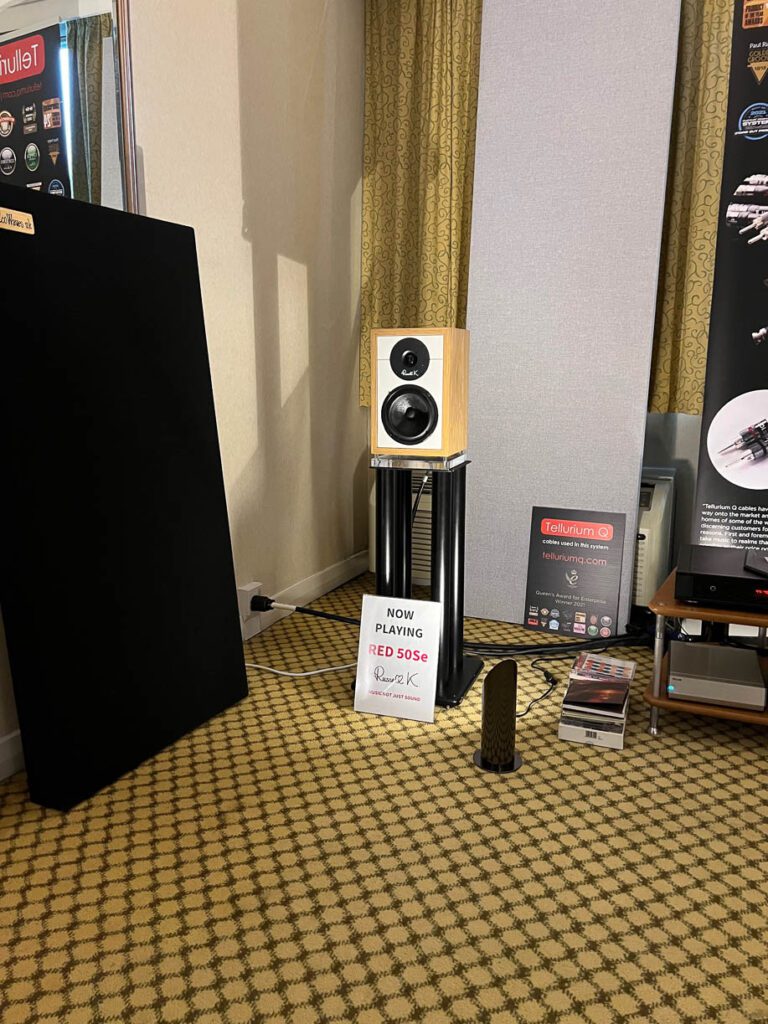
The pocket rocket in the Russell K. range is the RED 50. The rear-ported two-way stand-mount now comes in a more up-scale RED 50Se, with improved tweeter, crossover and an additional sub-plinth. The result is a cleaner, and more controlled, design over the standard RED 50. The new RED 50Se costs £3,950, £1,700 more than the RED 50.
Silence
A new Croatian turntable company, featuring the skills of AMG and Clearaudio designer Marko Borovac, the Silence Alpha TT-1 is a unique turntable and arm combination, featuring a Baltic Birch ply and aluminium composite plinth, an inverted bearing and a 19mm aluminium platter. The AC motor drives the platter via a non-pulsing sinewave and a large silicone belt made in-house. It’s joined by a 10” magnetically stabilised unipivot arm. The company has made this turntable as a proof of concept, and at £999, it’s a concept worth snapping up before they know how much it should cost!
Tannoy
Tannoy re-surfaced in style at Bristol. The brand took both a room to demonstrate its product and had a large display in the show’s main hall. In the room, it was making a particularly good sound with the £11,995 Stirling III LZ Special Edition, playing through AURALiC digital source and Western Electric amplification. This classic 10inch dual concentric design originally dates back to 1967 and features an Alnico magnet system.
Telegrapher
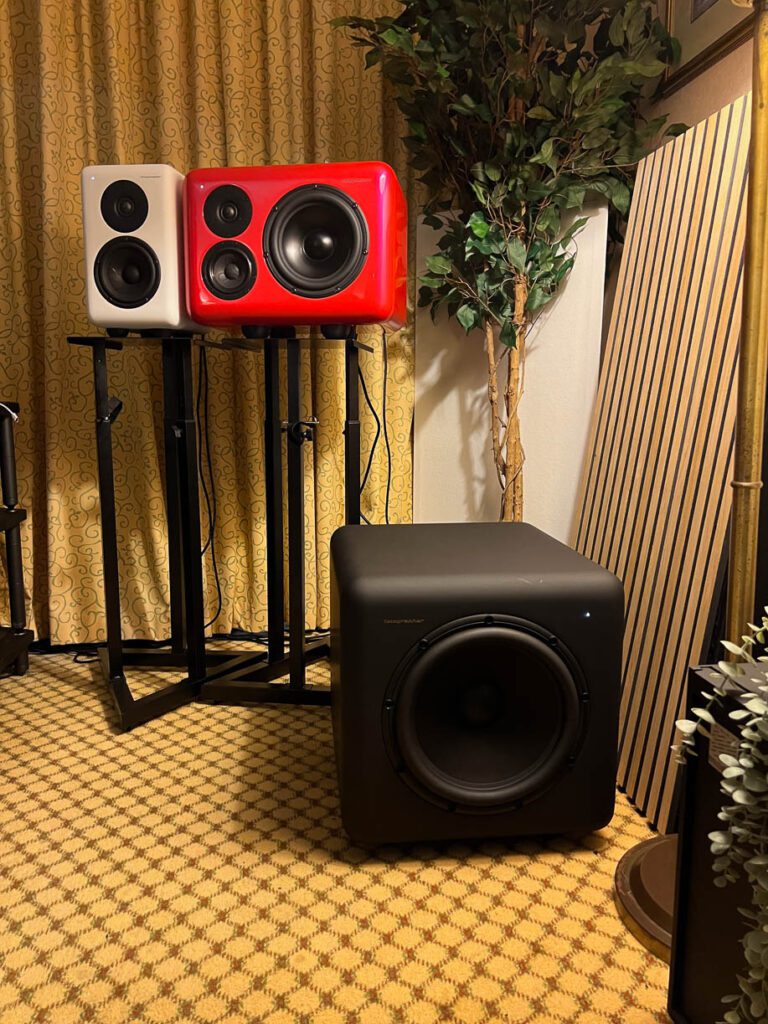
Telegrapher is a new active loudspeaker brand, with a strong studio vibe. It combines high-quality build and finishes with two and three-way active drive. There is also a matching powered subwoofer. Prices start at £4,500 for the two-way Fox loudspeaker.
Ultrafide
One of several pro-meets-domestic brands, UK based Ultrafide is the domestic offshoot of pro-audio amp maker MC2 (MC squared, like Einstein’s equation). Its first products are the £4,500 U4PRE audiophile quad output preamp, designed for biamping, and the matching £4,500 500W U500DC, which uses Class D power modules with a large linear power supply.
Wharfedale
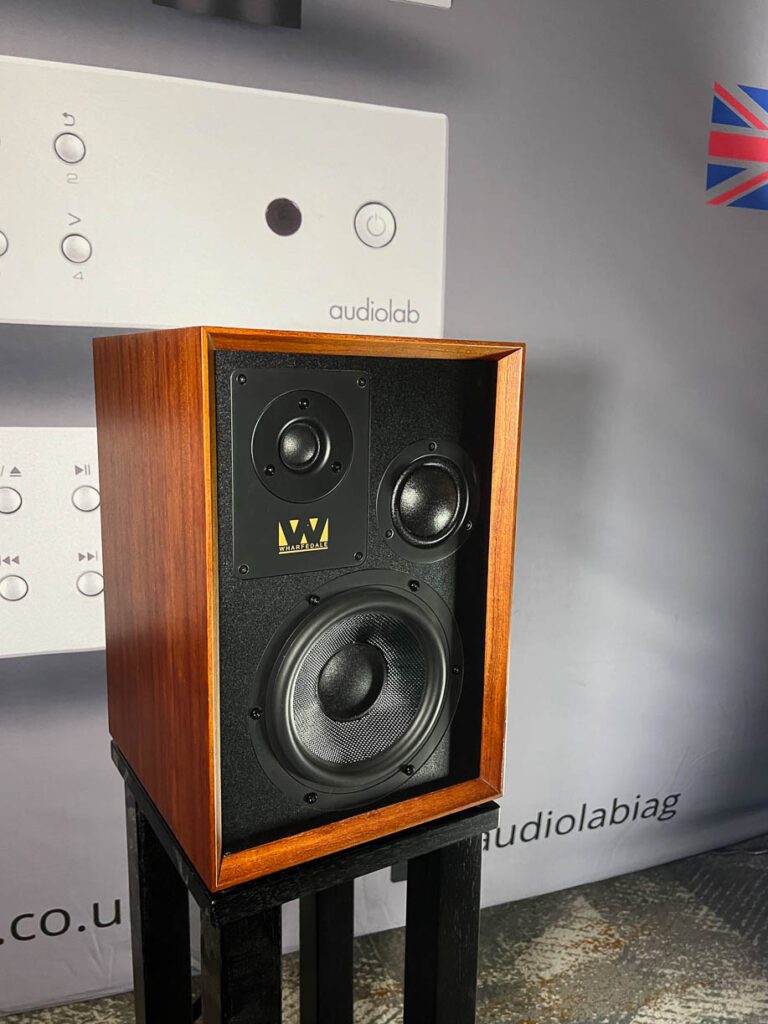
It might just be the smallest three-way loudspeaker on the market. The Wharfedale Super Denton is an addition to the company’s Heritage series. The £1,000 three-way design features a dome tweeter, offset midrange dome, and a cone mid-bass, all crammed into a box not much larger than most two-way designs. Further information on this loudspeaker is still to be confirmed, even though they ship in early March!
Wilson Benesch

Representing the high-end at Bristol, Wilson Benesch teamed up with Computer Audio Design and Trilogy Audio Systems to create a really engaging sound. The company was playing its £18,995 Discovery 3zero stand-mount loudspeakers, with the equipment resting on its £6,000 R1 Hi-Fi Rack. The company was also showcasing its new £23,995 IGx Infrasonic Generator, an 18in upward-firing carbon fibre cone with a 500W Class D amplifier.
Meanwhile Computer Audio Designs was showcasing its latest £1,950 GC1.1 and £4,950 GC3.1 Ground Control devices as well as its new £1,250 Ethernet Control, and £1,500 USB IIR cable and £350 GC Cable. All played through a £12,500 CAD 1543 MkII DAC.
This room also marked the return of Trilogy Audio Systems. The company showed its £12,500 914 Balanced Valve Preamplifier and the new £10,000 994 Mono Hybrid power amps that deliver 20W in Class A and 140W in class AB.
There was a lot more. Some of these appear on our YouTube channel. Others, such as Lyngdorf and Innuos (also using Lyngdorf amplifiers… I’m sensing a pattern here), were great-sounding rooms that didn’t have new products this time.





